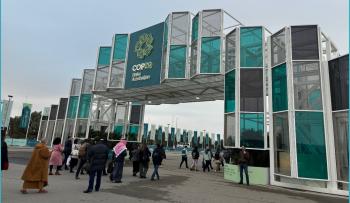
Active transport is the solution to the biggest health problem of our century
The proportion of overweight and inactive Europeans is constantly rising. So what? “Physical inactivity is the biggest public health problem of the 21st century. Low fitness is at least as strong a predictor of mortality as any of the other risk factors, including smoking and obesity”. This warning, issued by Steven Blair, professor in the departments of Exercise Science and Epidemiology and Biostatistics at the University of South Carolina, is not to be taken lightly. A recent report by the International Sport and Culture Association (ISCA) and the Centre for Economics and Business Research (CEBR) entitled ‘The economic cost of physical inactivity in Europe’ has indicated that a lack of physical activity – along with unhealthy diets – is a key risk factor for major non-communicable diseases such as cardiovascular diseases, cancer, and diabetes.
This is significant. With more people lining up for medical treatment, the pressure on public finances is becoming unsustainable. As pointed out in 2013 by the European Centre for International Political Economy (ECIPE), “on current trends, and if no changes are made to the healthcare coverage, governments in Europe will soon be facing rapidly increasing costs related to the treatment of illnesses and health problems associated with obesity”. However all is not gloom and doom. The study clearly shows that even a moderate level of daily physical activity could yield high returns. For example, taking up cycling could help health services save up to €1,300 per person per year. The European Public Health Alliance (EPHA), an NGO that ECF works with, found that if all Londoners exercised 20 minutes per day, there would be a 12% reduction in heart disease and a fall of over 20% in some types of cancer. “Twenty minutes of active transport, like walking or cycling to work, school or shop is eminently feasible for most people,” says ECF policy officer, Dr Randy Rzewnicki. “That’s why the ECF is part of EU projects like SWITCH and Bike2Work.”
The benefits of physical exercise extend beyond limited healthcare costs too. “Reducing the number of people driving cars means less congestion, air and noise pollution, and many other benefits” says Rzewnicki. Most encouraging of all, the study shows that the benefits of physical activity have been recognised at ministerial level, with the Council adopting recommendations on health-enhancing physical activity (HEPA) in 2013. The ECF is part of EU expert groups working on implementing those recommendations. You can see the full report 'The economic cost of physical inactivity in Europe’ here.
Source: 'The economic cost of physical inactivity in Europe’ by the International Sport and Culture Association (ISCA) and the Centre for Economics and Business Research (CEBR) published on 18 June 2015
About the author Eleanor Hegarty is ECF’s Communications Assistant on Projects and Health. She is a history undergraduate at the University of Cambridge in the UK.
- Log in to post comments
Contact the author
Recent news!
Upcoming events
Contact Us
Avenue des Arts, 7-8
Postal address: Rue de la Charité, 22
1210 Brussels, Belgium










